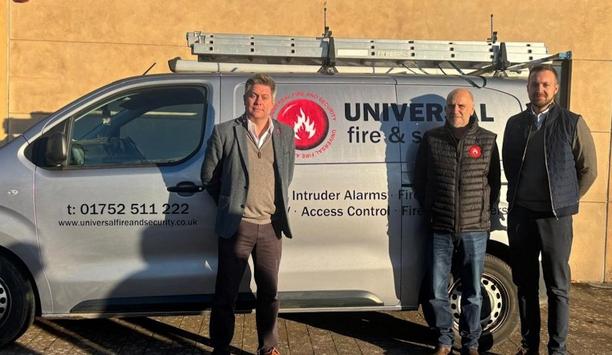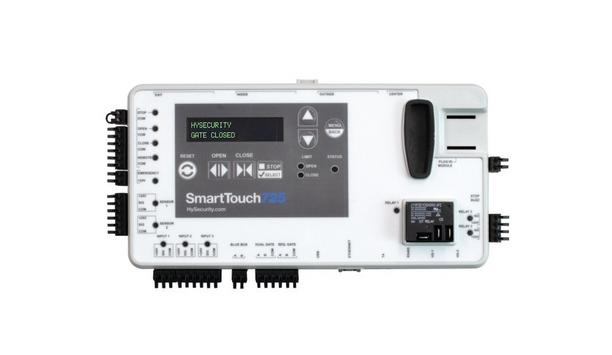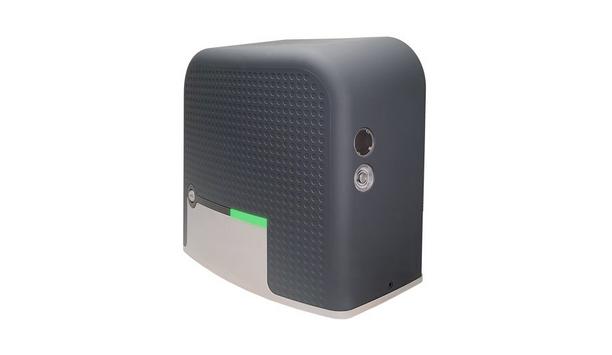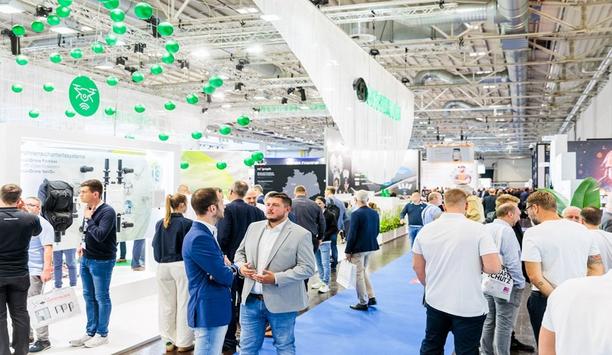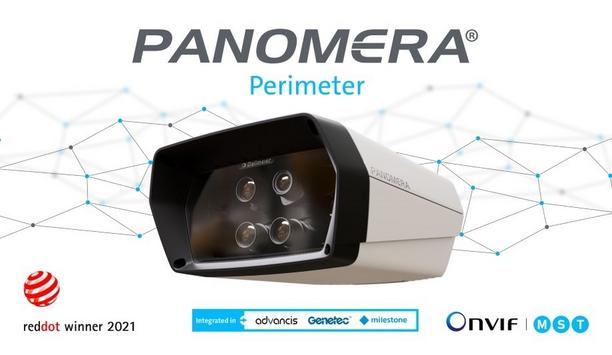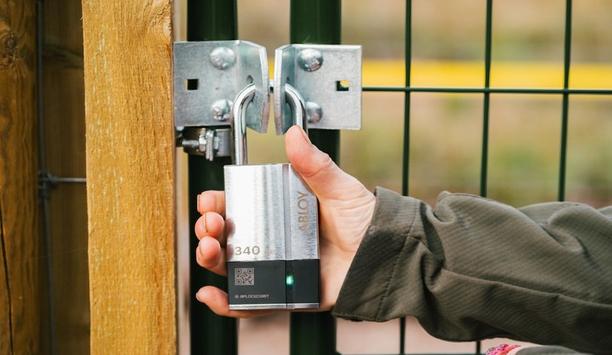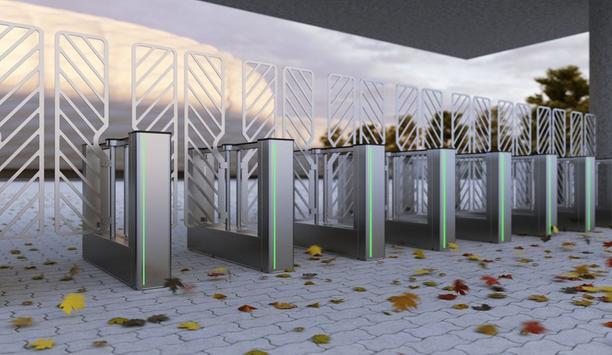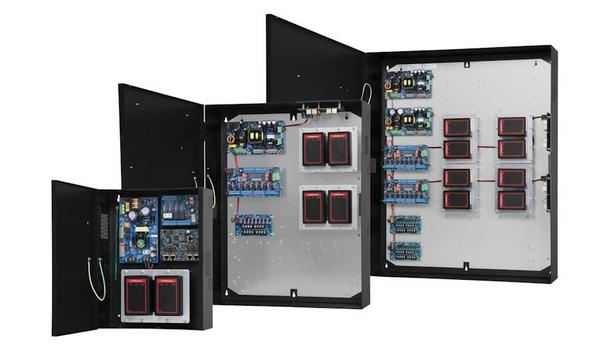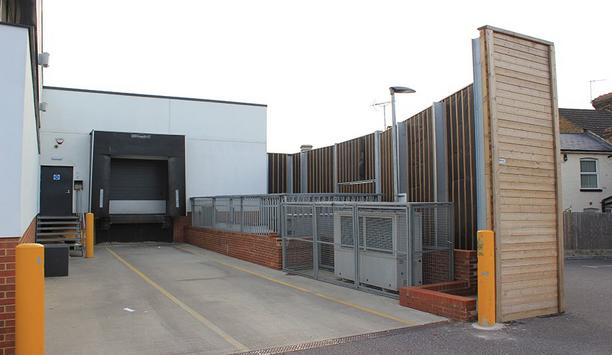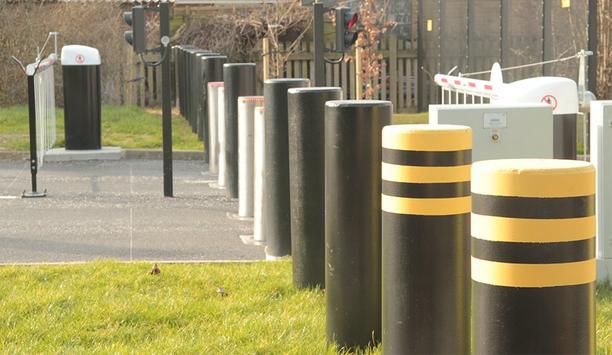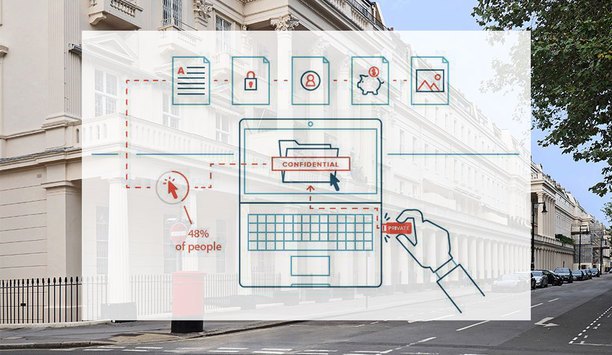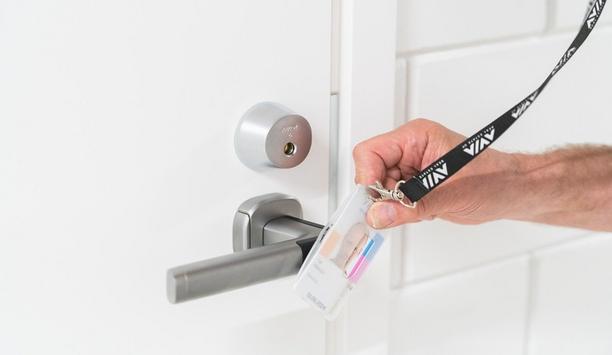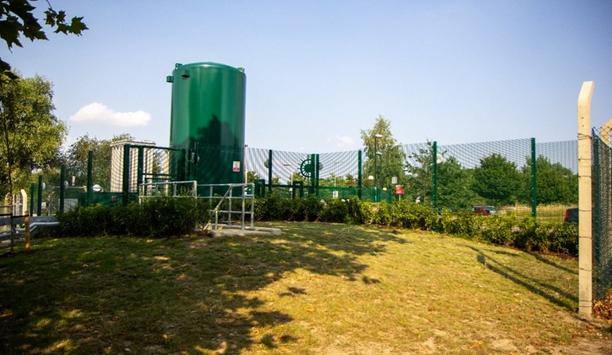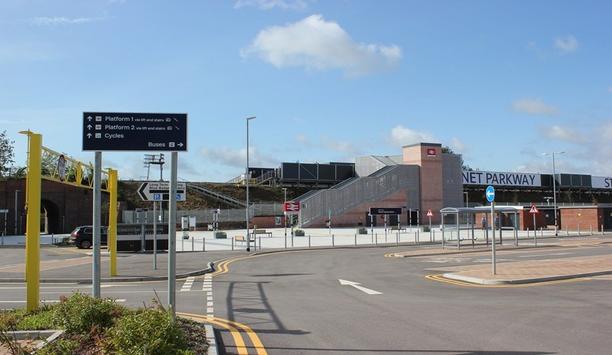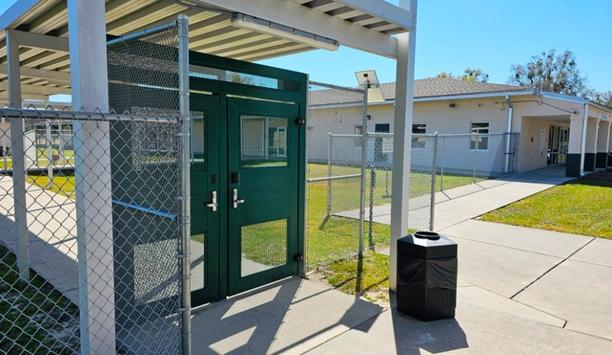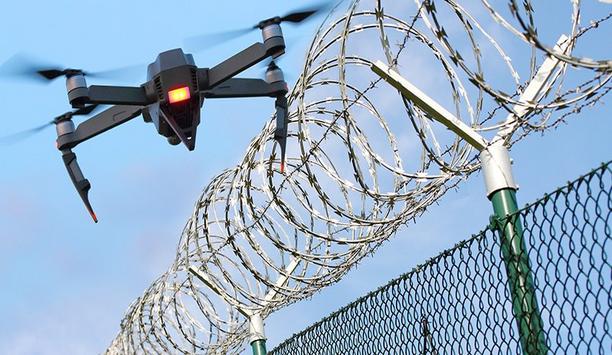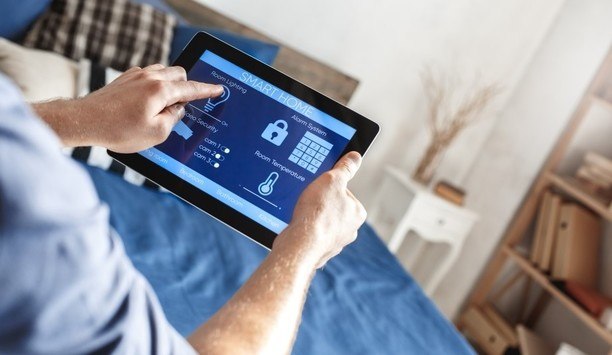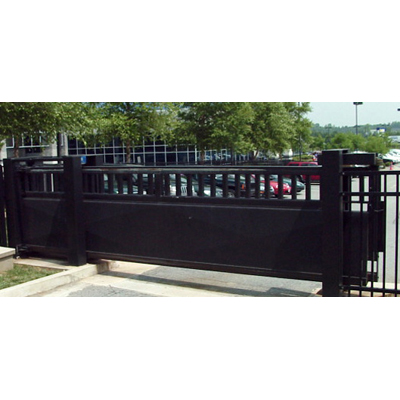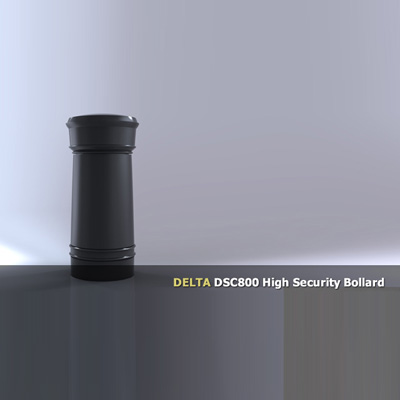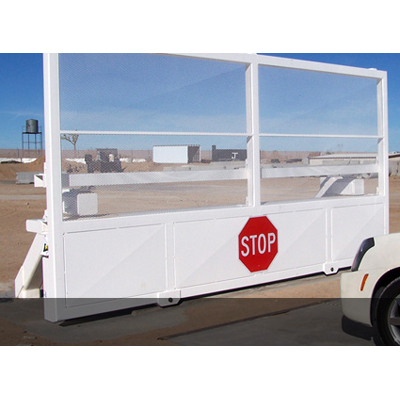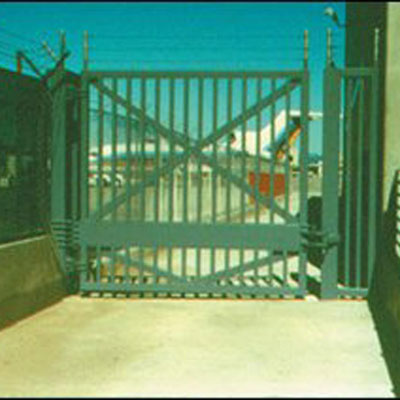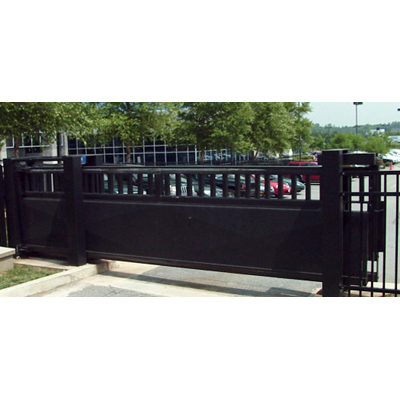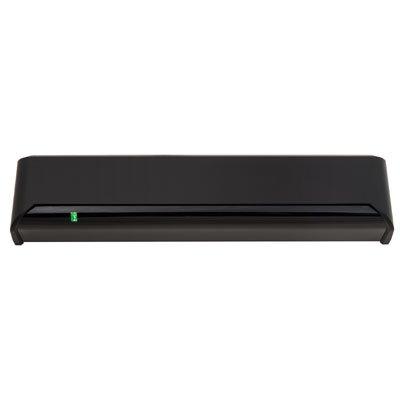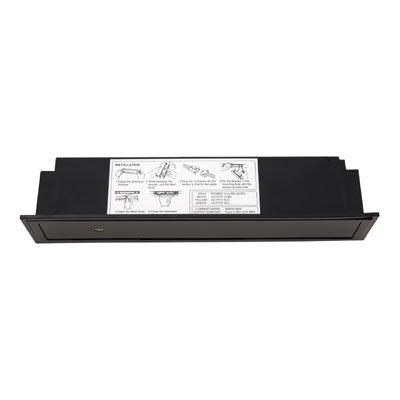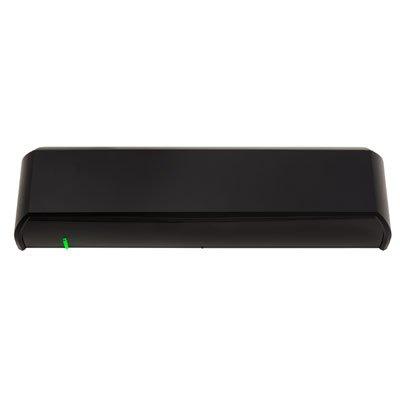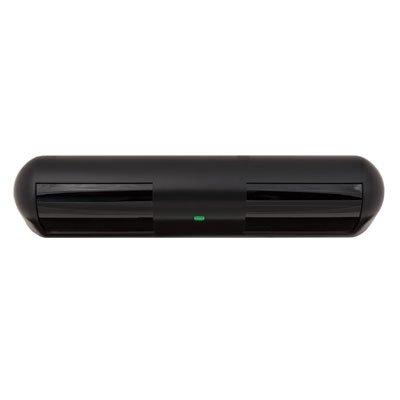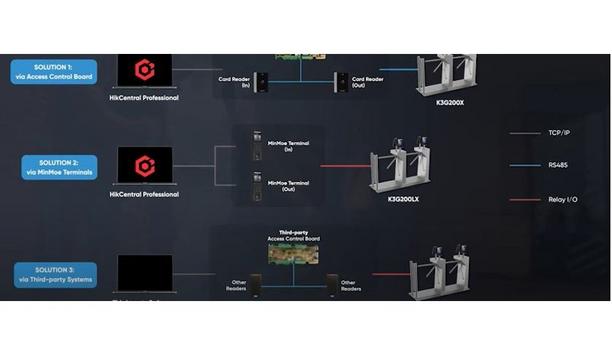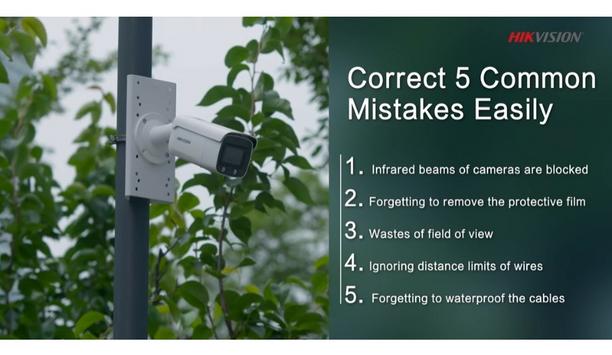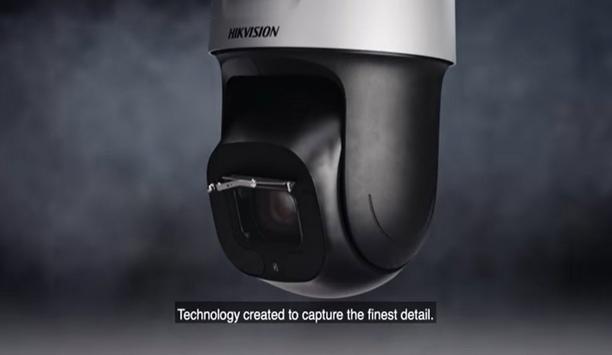Gates & Fencing
Ranger Fire and Security has now announced its acquisition of Plymouth-based Universal Fire and Security Ltd, marking the business’s strategic entry into the South West of England. Founded in 2001 by Mark Gibson, Universal began as a security-focused provider before expanding into fire protection services, building a strong reputation across Devon and Cornwall for its technical expertise and customer service. New installations for a strong and loyal customer base The company&...
Gateway Automation has been named the winner of the Gate and Barrier Contractor of the Year award at the 2025 Association of Fencing Industries UK Fencing Awards. The category was sponsored for the third consecutive year by the Door & Hardware Federation (DHF), with the ceremony taking place on Thursday, 13th November at Mercedes-Benz World. The event brought together voices from across the fencing and automation sector. Overall category winner The Gate and Barrier Contractor of the Yea...
Nice, a pioneer in home and building management solutions, has launched the SwingSmart™ 535 and SlideSmart™ 535 – next-generation commercial gate operators built for pros who demand performance, reliability, and smarter control. Designed with advanced brushless DC motor technology and next-gen control intelligence, the new 535 Series delivers smooth, quiet, and efficient operation even in demanding environments – from gated communities and estates to commercial sites and...
The Door & Hardware Federation (DHF) is pleased to announce its participation in two of the UK’s most significant security and safety industry events this October: Fencex 2025 and MLA Expo 2025. On 15th October 2025, DHF will exhibit at Fencex, the UK’s only exhibition dedicated to perimeter security, fencing, and access control. Taking place at NAEC Stoneleigh Exhibition Park in Warwickshire, the biennial event brings together professionals, contractors, specifiers, and...
Codelocks has launched its Adjustable Gate Latch, giving locksmiths and facilities managers an easier way to control access through perimeter gates where the gate and post spacing exceeds the range of a traditional mortice latch. Jo Milne-Rowe, Managing Director at Codelocks, said: “This new product is quite literally filling a gap that other products can’t. There are many scenarios where standard mortice latches won’t work, and often the space between the post and gate w...
Jacksons Fencing, a globally renowned manufacturer of high-quality fencing and security solutions, has launched its versatile EuroGuard® V Mesh fencing system online. This expansion gives commercial developers and specifiers immediate, streamlined access to secure fencing solutions. By simplifying the specification process, it supports more efficient project planning and empowers professionals to make faster, more informed decisions. Discreet, durable security for modern developments Euro...
News
Nice, a global pioneer in home and building management solutions, proudly announces the launch of Juno, a sleek and powerful gate operator designed to redefine residential gate automation. As the market increasingly demands compact yet feature-rich solutions, Juno offers a breakthrough design that blends style, performance, and ease of use, delivering unparalleled value for both installers and end users. Aesthetic and functional demands “Our partners need reliable, easy-to-install solutions that align with modern aesthetic and functional demands,” said Lisa Steinberg, Senior Product Manager at Nice North America. “With Juno, we’re providing a revolutionary product that not only performs exceptionally but also elevates the standard for gate operators in residential applications.” Juno features The intuitive status indicator provides real-time updates, with green signaling opening, red indicating closure Juno features a compact and modern design inspired by European aesthetics but tailored for the North American market, challenging the notion that effective gate operators need to be bulky to be powerful. Its 17.2” w x 16”d dimensions can operate up to 800 lb. gates that are 40 ft long. Its industry first, integrated driveway light illuminates the driveway during gate activation, enhancing safety and convenience. The intuitive status indicator provides real-time updates, with green signaling opening, red indicating closure, and rapid flashing alerting users to errors. Juno’s manual release The photo eye safety device is internally mounted, offering greater reliability and protection compared to traditional externally mounted systems. In the event of power loss, Juno’s manual release ensures uninterrupted access. Additionally, the operator’s built-in slow-down feature minimizes wear and tear, delivering durability and whisper-quiet performance. At its core is the Mercury 310 controller, designed for fast and easy programming, enabling installers to complete setups efficiently, saving time and resources. The Juno system runs on a 12VDC battery with a battery charger and MPPT solar controller built into the control board, providing flexible AC or solar power options. Needs of the gate automation industry Juno was developed to meet the needs of the gate automation industry with a focus on reliability Juno was developed to meet the needs of the gate automation industry with a focus on reliability, ease of installation, and long-term performance. Installers can benefit from its quick setup and included accessories, complete with a receiver, two remotes and required safety devices, making it possible to complete more installations and service more customers, while end-users enjoy a stylish, durable, and low-maintenance solution. Innovative design and robust engineering Juno is designed to meet the demands of luxury clients while challenging the perception that sleek, modern designs compromise functionality. Juno brings the popular European product to be manufactured in and available to the U.S. market. With innovative design and robust engineering, Juno is poised to capture a significant market share in the slide gate operator segment, offering a competitive edge with its unique features and affordability.
Highly satisfied visitors, a significant 25 percent increase in exhibitors, and countless successful discussions at the trade fair stand: After four intensive days, the pioneering trade fair for the security industry, Security Essen, has come to a successful close. With more than 500 exhibitors from 36 nations and over 20,000 trade visitors - an increase of 17 percent - from 86 nations, the trade fair offered a comprehensive platform for innovations and future trends relating to security solutions for companies, private households, and public spaces. Security Essen 2024 “This strong response impressively underscores the importance of Security Essen as an indispensable platform for the international security industry,” says Oliver P.Kuhrt, CEO of Messe Essen. “This is particularly evident from the fact that decision-makers were here on site. Three out of four visitors are significantly involved in procurement and purchasing decisions in their company - a high-caliber target group.” The exhibitors The demand for security solutions is constantly increasing, which was felt in the exhibition halls The exhibitors – ranging from global market pioneers, niche players, hidden champions, associations, and institutions to start-ups - reported excellent conversations and high-quality contacts at their exhibition stands. The demand for security solutions is constantly increasing, which was felt in the exhibition halls. This also reflects the sector's growing economic significance. In Germany alone, turnover in the security industry has grown by over nine percent more than 31 billion euros within a year. Cloud-based access solutions “We noticed this drive at our stand - especially with the Salto world premiere for cloud-based access solutions,” says Axel Schmidt, Chairman of the Security Essen Advisory Board, Managing Director of Salto Systems, and Chairman of the Board of the BHE Federal Association for Security Technology. “In its 50thanniversary year, Security Essen has once again reaffirmed its position as the pioneering trade fair. Whether it's access control, perimeter protection, video surveillance, or burglary protection: all exhibition areas showcased trends in system integration and AI support.” Stand-alone solutions AI provides support in data analysis, but also in security - for example during patrols Stand-alone solutions are evolving into open products with many interfaces for integrating additional technologies such as alarm systems, and video or fire alarm systems. AI provides support in data analysis, but also in security - for example during patrols. Robot dogs that can also record images, detect gases, or find holes in fences were on display. The focus also extended to personal protection. For example, exhibitors showed personal protective equipment, including discreet sweaters that can withstand knife attacks. Visitors praised the innovations and the supporting program The majority of visitors at Security Essen came from installation companies, security services, and industry, but also from the construction industry and public authorities. They were primarily interested in solutions relating to access control, video surveillance, intrusion, security services, access and entry barriers, and mechanical security technology. Trade visitors were highly satisfied with the innovations on display and the supporting program. With numerous events, the trade fair offered them real added value: Drones are becoming increasingly important in the security industry. At the first European Drone Conference, experts discussed innovative applications and safety aspects of drone technology. Spectacular explosive attacks on financial institutions have made headlines in the past. The New Banks and Savings Banks Day showed how the institutions can protect themselves. There were over 400 registrations for the training and further education day organized by the BDSW Federal Association of the Security Industry. Pupils, students, trainees, and retrainees came to find out about career opportunities in the security industry. The DNS Digital Networking Security Conference focussed on pressing digital security issues. The presentation by intelligence and crime analyst Mark T. Hofmann, who provided insights into the psychology of cybercrime, was particularly well attended. Exhibitors and their products took center stage at the security experts' forum. The Outstanding Security Performance Awards OSPAs honored particularly outstanding achievements for the security industry. Already strong interest in Security Essen 2026 Already, nine out of ten visitors and 86 percent of exhibitors have confirmed their participation 91 percent of visitors praised their visit to the trade fair and recommended pioneering trade fairs for the security industry to others. Already, nine out of ten visitors and 86 percent of exhibitors have confirmed their participation in the next Security Essen, which will take place from September 22 to 25, 2026, at Messe Essen. Company participation “These figures are a compliment, confirmation, and order for us at the same time,” says Oliver P. Kuhrt, CEO of Messe Essen. “We are delighted that during the ongoing trade fair, companies such as Hekatron, NSCSicherheitstechnik, Advancis Software & Services, Deister Electronic, ABI-Sicherheitssysteme, Rohde & Schwarz, and Ajax Systems have already confirmed their participation for Security Essen 2026.” “The industry needs Security Essen” Uli Schunk, Head of Marketing at Advancis, “Our conclusion is very positive, we had many great conversations and more visitors at our stand than last time." "There were many concrete project inquiries - not only from Germany but also from other European countries. We experienced the fair as consistently well-attended, and the atmosphere was excellent.” Scope of Security Essen Thomas Taferner, Head of Sales and Marketing at Telenot Electronic, “The industry needs Security Essen - both now and in the future. It is the only trade fair where the full range of security technology can be experienced." "We are very satisfied with the number of visitors this year and the response to our presence at the fair. Our stand was almost always full and the trade audience was highly qualified." Great feedback "We had many visitors from installation companies, but also large corporations, authorities, and municipalities, including many international representatives. We are looking forward to Security Essen 2026 and have already booked our booth space again.” Andreas Diekmann, CEO of NSC Sicherheitstechnik GmbH, "We are very satisfied with our presence, received great feedback on our booth and had many high-quality conversations. Our booth party was fantastic! We thank all our guests and look forward to Security 2026!”
Dallmeier, one of the pioneering providers of professional video surveillance solutions, presents the new Panomera® S4 Perimeter. The “Perimeter Panomera®” combines four sensors in one optical unit. This provides a resolution of 200 effective megapixels – MPe – per camera. Combined with an AI object classification system specially trained for perimeter requirements, and AI tamper detection also optimized for this purpose, the result is an extremely powerful solution with comparatively low infrastructure, system, and personnel costs. Panomera® S4 Perimeter The surveillance of narrow strips along perimeters such as fences, buildings, or roads, often referred to as “sterile zones”, is one of the most demanding requirements for physical security. Until recently, video systems such as the major system on the perimeter have often failed to live up to user expectations, particularly in high security environments: unsatisfactory detection performance, high false alarm rates and, above all, the fact that the analytics are easy to manipulate are often cited as disadvantages. Other shortcomings include poor image quality and high infrastructure costs, particularly due to the large number of cameras required. The new Panomera® S4 Perimeter from Regensburg-based manufacturer Dallmeier promises to help. Specially trained perimeter AI Panomera® S4 Perimeter reliably recognizes people with unusual body postures such as bent over Equipped with a neural network specially trained for perimeter protection, the Panomera® S4 Perimeter reliably recognizes people with unusual body postures such as bent over, crouching or lying down and movement patterns such as very slow, very fast or crawling. People wearing camouflage such as Camouflage Central Europe, British Smock or Ghillie are also reliably detected. Combination of perimeter AI and AI tamper detection The advanced AI tamper detection application supports the detection of tampering attempts that are typically expected at a perimeter. In addition to classic methods such as twisting, defocusing, spray-painting, and covering the camera or IR illumination, blinding the camera with a laser pointer, flashlight, or strobe light is also reliably detected. Furthermore, indirect tampering by deliberately fogging the detection area with pyrotechnics such as smoke grenades or smoke pots is detected and an alarm is triggered. The combination of both evaluation techniques provides optimum detection of intrusion attempts with a very low error and false alarm rate. Perimeter App The Panomera® S4 Perimeter has outstanding low-light performance. The latest generation of sensors is three times more sensitive to infrared light than its predecessors and delivers outstanding results even in low-light conditions. With a dynamic range of 130dB, it can accurately capture details at distances of up to 200 meters, providing excellent results even in difficult lighting conditions. With the specially developed AI Perimeter application, users can define specially protected areas with pre-zones. When relevant objects (people, vehicles, etc.) enter these zones, it is possible to escalate messages to focus operators’ attention on the most important events. One for the right, one for the left: For optimum geometry Depending on the model, the sensors are oriented to the right or left and arranged in perspective The camera’s special perimeter geometry minimizes blind spots and avoids capturing uninteresting areas beyond the fence – an important privacy benefit. Depending on the model, the sensors are oriented to the right or left and arranged in perspective. This means that even unusual postures and movements can be detected. The camera detects the upper body of a standing person from a distance of as little as 4 meters, enabling targeted surveillance without unnecessarily covering adjacent areas. Perimeter protection standards “With the Panomera® S4 Perimeter we are setting a new standard in perimeter protection: where previously several cameras, complex infrastructure, and costly analysis were necessary, now a single system every 200 meters is sufficient,” says Thomas Reisinger, CTO of Dallmeier electronic. “Our specially trained perimeter AI reliably detects even the most challenging scenarios, such as crawling people in camouflage or complex manipulation attempts. This is a real revolution in the field of perimeter security, especially for operators of critical infrastructures and organizations that are directly or indirectly affected by NIS-2 and the other CRITIS directives.”
ABLOY rose to the top of the list as Finland’s most valued brand of 2024, according to an annual survey by pollster Taloustutkimus. Market research company - Taloustutkimus surveys Finnish consumers’ opinions on brands every year. In 2024, ABLOY was ranked the most valued brand in Finland. "It is an honor to influence how the ABLOY brand sounds, looks, and feels like. Our brand is well known in Finland and around the world," says Johanna Varis, Abloy Oy's Head of Marketing and Segment Development. Evolving a beloved brand Johanna Varis adds, "Brand building is systematic and requires active listening to customers. We have been granted the opportunity to impact the daily lives of Finns at home, at work, and during their free time." "Earning the trust of Finns also indicates how our brand is valued and trusted outside of Finland," says Varis. Digital and mechanical locks The iconic ABLOY logo has only been renewed five times during nearly 120 years of operations ABLOY is a pioneer in the security field and in developing new digital and mechanical locking products. Changing the brand’s image is carefully considered: for example, the iconic ABLOY logo has only been renewed five times during nearly 120 years of operations. Johanna Varis adds, "Every person behind ABLOY values the brand. We all play a part in building a success story and a better future for everyone." The survey includes nearly 700 brands 2024's top five most respected brands are ABLOY, The Nordic Swan Ecolabel, Hyvää Suomesta - label (Produce of Finland), S-Etukortti, and The Key Flag. ABLOY previously topped the list back in 2018. In the study, consumers ranked 686 different brands based on how much they value that particular brand. The survey also asked, for example, how likely consumers would be to recommend the brand.
Automatic Systems, an industry-pioneering manufacturer of pedestrian and vehicle entrance control access systems, is pleased to announce that its FirstLane andFirstLane PLUS speed gates are UL-listed. FirstLane pedestrian speed gates The FirstLane pedestrian speed gates have proved to be highly reliable and suitable for any architectural environment, from classic to modern. They prevent unauthorized access by physically blocking entry to unauthorized individuals. Trusted to not only meet the challenges of security applications, the FirstLane PLUS speed gates are ideal for both indoor and outdoor applications. High bi-directional throughput The minimalistic design makes them a perfect fit for environments with a medium level of security They offer an aesthetically pleasing design that combines glass and attractive finishes as well as interactive lighting for a more intuitive user experience. The minimalistic design makes them a perfect fit for environments where a medium level of security is required. The FirstLane series of speed gate turnstiles provide a high bi-directional throughput without compromising users’ safety. UL standards UL Standards 325 and 2593, as well as CSA C22.2 NO 247:14 (the harmonized standard in Canada) are the prevalent industry standards for ensuring the safe operation of doors, turnstiles, gates, and access control equipment in the UnitedStates and Canada. Being UL Listed ensures that the product meets local and federal environmental and safety regulations, giving systems integrators and end users alike the peace of mind that Automatic Systems’ speedgates deliver the highest level of quality and safety standards to meet their access control needs.
Altronix, the recognized pioneer in power and data transmission for the professional security industry, is pleased to announce its strategic partnership with LiftMaster, a pioneering brand of professionally installed access solutions including smart video intercoms, smart door controllers and gate operators. This collaboration combines Altronix’s advanced power distribution with LiftMaster’s CAP2D Smart Access Controllers, resulting in new pre-configured kits designed to support up to 16 door systems from a single enclosure. LiftMaster Smart Access 2-Door Controller (CAP2D) is a cloud-based credentialed access control product that controls up to two doors, gates, elevators or commercial door operators. Customers can easily expand to any number of access points through the myQ Community web portal. Partner with LiftMaster "We are excited to partner with LiftMaster to deliver a seamless door control solution that allows for more flexibility for our mutual customers," said Ronnie Pennington, Director of Sales for the Americas. "This new access and power integration highlights our focus on delivering solutions that exceed industry standards." Trove solutions are available and consist of pre-configured kits that support 4, 8, or 16-door systems These scalable Trove solutions are now available and consist of pre-configured kits that support 4, 8, or 16-door systems. These can also be designed a la carte – by choosing an Altronix Trove enclosure/backplane, power distribution, and the LMBK2 mounting bracket to support CAP2D controllers. Kit models include battery leads, mounting hardware, power on/off rocker switch(es), and tamper switch. New Altronix Models TLM400K1(D) – 4-Door Kit T2LMK7F8N(D) – 8-Door Kit T3LMK77F16N(D) – 16-Door Kit (CAP2D boards sold separately) Advancing access control technology “We are thrilled to collaborate with Altronix, delivering a seamless and easy-to-install solution for our LiftMaster Smart Access 2-Door Controller (CAP2D)," said Rebecca Peterson, Director of Product, Access Control Solutions “The Trove-series SKUs, custom-built for LiftMaster, will enable our installers to unlock new possibilities for both retrofit and new installations, thereby expanding our award-winning myQ Community access control experience to an even broader customer base.” By combining the strengths of both companies, these kits provide enhanced power, improve installation efficiency while providing a single point of maintenance, making them an ideal choice for a wide range of multi-door applications. The Altronix and LiftMaster partnership exemplifies the companies’ dedication to advancing access control technology, ensuring that security integrators have the tools they need to deliver comprehensive and reliable solutions to their end users.


Expert commentary
Amidst the challenges of a prevailing economic downturn, the retail sector finds itself grappling with an unparalleled rise in incidents of shoplifting, theft, and burglaries. The disconcerting scenes witnessed on London’s Oxford Street in August 2023, where crowds gathered, looting as many stores as possible, sent shockwaves across the nation’s retailers. This alarming surge in retail crime has put retailers on high alert, as they contend with a rising tide of security concerns. Shoplifting concerns Recent data from the Union of Shop Distributive and Allied Workers (USDAW), has raised alarming concerns: shoplifting rates have surged by an unprecedented 24%. In the first half of 2023 alone, there were approximately 8 million reported shoplifting incidents. With the ongoing burden of the cost of living crisis and the approaching festive season, it is expected that these figures will keep surging. Implementing robust security measures Theft and prevention strategies cost retailers approximately £2 billion in 2021/2022 While more help from the Government to support retail workers and the businesses shoplifters target is certainly needed, the implementation of robust security measures will significantly contribute to deterring these crimes from occurring in the first place. British retailers spend millions on tools to deter and catch shoplifters inside stores, from CCTV and security guards to electronic tagging and alarms. The Grocer reported that theft and prevention strategies cost retailers approximately £2 billion in 2021/2022. Despite these initial costs, other threats are at play beyond the shop floor. Break-ins by criminal gangs For many large town center stores and supermarkets, and units in retail parks, the rear doors and delivery areas are commonly targeted by criminal gangs. It’s not uncommon for thefts to occur from pallets or cages that have been unloaded from lorries and sit waiting to be moved into the building. After-hours break-ins are a risk for all store owners too, particularly over the festive season when a lot of high-value stock has been delivered to shops and supermarkets. Addressing anti-social behaviour The additional fencing was deemed an essential measure to safeguard the community Anti-social behavior also poses a challenge for retailers. In 2022, an Aldi based in Derby invested in security fencing to protect staff and deter loitering groups. The additional fencing was deemed an essential measure to safeguard the community, as dangerous items were frequently found outside the store, including weapons and hypodermic needles. So how do physical security solutions such as fencing and gates help better protect retail establishments such as supermarkets and edge-of-town retail park shops? Fencing and gates: a critical component of retail security 1. Risk assessment and target hardening A thorough risk assessment will identify potential weak spots that require protection. ‘Target hardening’ involves implementing physical security measures that become more robust as they approach the target. This helps deter intruders while ensuring ease of access for customers and staff. 2. Effective perimeter security Opt for difficult-to-climb security fencing that provides a robust obstacle against thieves, vandals, and intruders Selecting fencing solutions according to the potential threats, site characteristics, and topography is crucial. It is important to specify fencing that strikes a balance and maintains a welcoming appearance while safeguarding external areas of the store or warehouse from potential harm and unauthorized access. Solid fencing which provides concealment can help to conceal expensive goods and remove them as a target for opportunistic theft. Opt for difficult-to-climb security fencing that provides a robust obstacle against thieves, vandals, and intruders. I recommend selecting a sufficiently tall and robust fence such as an acoustic barrier. Its noise-reducing properties are often beneficial for these types of sites too. 3. Controlling vehicular speeds and access To enhance security, consider controlling vehicular speeds and access. One effective approach is the installation of bollards at the ends of traditional high streets. This practice is already commonplace as a means of safeguarding against hostile vehicle attacks, but it can also play a pivotal role in preventing quick getaways of vehicles involved in potential heists. Additionally, employing road blockers and sliding gates at the rear entrances of delivery areas would serve to fortify security further. These measures can help in delaying vehicles, allowing for necessary checks to be conducted. 4. Balancing security with aesthetics The presence of high-security fencing can also make a site more of a target for vandals and burglars Another challenge is avoiding creating an imposing presence, especially important for areas situated near residential communities. The presence of high-security fencing can also make a site more of a target for vandals and burglars. To minimize this risk consider specifying timber fencing and traffic barriers to secure car parks, providing both security and a welcoming atmosphere for shoppers. Taking an integrated approach Combine secure perimeter fencing with effective lighting in places with shaded areas and at doors, gates, and shop windows, alongside Perimeter Intrusion Detection Systems (PIDS), and strategically placed CCTV. These measures will hinder unauthorized entry and escape, increasing the likelihood of detection and apprehension. Prioritising employee wellbeing Installing robust security fencing, complemented by CCTV, good lighting, and guarding, creates a safe environment Installing robust security fencing, complemented by CCTV, good lighting, and guarding, creates a safe environment for employees. This not only safeguards their well-being but also provides peace of mind that they are protected effectively in the case of a burglary or crime. When selecting security products for retail sites, it is advisable to opt for items that have undergone rigorous testing and carry relevant certifications for their security level. Each component should meet industry-specific standards for its intended purpose and originate from manufacturers accredited under ISO 9001:2015. This ensures a high standard of quality and reliability in safeguarding the premises. High-quality security fencing As the cost-of-living crisis continues, crime rates increase, and the festive season approaches, the time to act and implement on-site security is now. By investing in comprehensive security measures, retailers can protect their assets, employees, and customers, ensuring a safer and more secure shopping environment for all. High-quality security fencing is also a sound investment, that requires little or no maintenance once installed. The best fencing solutions are extremely weather-resistant, and won’t suffer from rust or corrosion. With all sectors preparing to ride the rapids of recession in the coming year, improving on-site security while selecting cost-effective measures, is one surefire way to protect your people, your property, and your profits from harm.
Global transportation networks are becoming increasingly interconnected, with digital systems playing a crucial role in ensuring the smooth operation of ports and supply chains. However, this reliance on technology can also create vulnerabilities, as demonstrated by the recent ransomware attack on Nagoya Port. As Japan's busiest shipping hub, the port's operations were brought to a standstill for two days, highlighting the potential for significant disruption to national economies and supply chains. Transportation sector The attack began with the port's legacy computer system, which handles shipping containers, being knocked offline. This forced the port to halt the handling of shipping containers that arrived at the terminal, effectively disrupting the flow of goods. The incident was a stark reminder of the risks associated with the convergence of information technology (IT) and operational technology (OT) in ports and other critical infrastructures. This is not an isolated incident, but part of a broader trend of escalating cyber threats targeting critical infrastructure. The transportation sector must respond by bolstering its defenses, enhancing its cyber resilience, and proactively countering these threats. The safety and efficiency of our transportation infrastructure, and by extension our global economy, depend on it. Rising threat to port security and supply chains XIoT, from sensors on shipping containers to automatic cranes, are vital to trendy port functions OT, once isolated from networked systems, is now increasingly interconnected. This integration has expanded the attack surface for threat actors. A single breach in a port's OT systems can cause significant disruption, halting the movement of containers and impacting the flow of goods. This is not a hypothetical scenario, but a reality that has been demonstrated in recent cyberattacks on major ports. Adding another layer of complexity is the extended Internet of Things (XIoT), an umbrella term for all cyber-physical systems. XIoT devices, from sensors on shipping containers to automated cranes, are now integral to modern port operations. These devices are delivering safer, more efficient automated vehicles, facilitating geo-fencing for improved logistics, and providing vehicle health data for predictive maintenance. XIoT ecosystem However, the XIoT ecosystem also presents new cybersecurity risks. Each connected device is a potential entry point for cybercriminals, and the interconnected nature of these devices means that an attack on one, which can move laterally and can have a ripple effect throughout the system. The threat landscape is evolving, with cybercriminals becoming more sophisticated and their attacks more damaging with a business continuity focus. The growing interconnectivity between OT and XIoT in port operations and supply chains is also presenting these threat actors with a greater attack surface. Many older OT systems were never designed to be connected in this way and are unlikely to be equipped to deal with modern cyber threats. Furthermore, the increasing digitization of ports and supply chains has led to a surge in the volume of data being generated and processed. This data, if not properly secured, can be a goldmine for cybercriminals. The potential for data breaches adds another dimension to the cybersecurity challenges facing the transportation sector. Role of Cyber Resilience in Protecting Service Availability Cyber resilience refers to organization's ability to prepare for, respond to, and recover from threats As the threats to port security and supply chains become increasingly complex, the concept of cyber resilience takes on a new level of importance. Cyber resilience refers to an organization's ability to prepare for, respond to, and recover from cyber threats. It goes beyond traditional cybersecurity measures, focusing not just on preventing attacks, but also on minimizing the impact of attacks that do occur and ensuring a quick recovery. In the context of port operations and supply chains, cyber resilience is crucial. The interconnected nature of these systems means that a cyberattack can have far-reaching effects, disrupting operations not just at the targeted port, but also at other ports and throughout the supply chain. A resilient system is one that can withstand such an attack and quickly restore normal operations. Port operations and supply chains The growing reliance on OT and the XIoT in port operations and supply chains presents unique challenges for cyber resilience. OT systems control physical processes and are often critical to safety and service availability. A breach in an OT system can have immediate and potentially catastrophic physical consequences. Similarly, XIoT devices are often embedded in critical infrastructure and can be difficult to patch or update, making them vulnerable to attacks. Building cyber resilience in these systems requires a multi-faceted approach. It involves implementing robust security measures, such as strong access controls and network segmentation, to prevent attacks. It also involves continuous monitoring and detection to identify and respond to threats as they occur. But perhaps most importantly, it involves planning and preparation for the inevitable breaches that will occur, ensuring that when they do, the impact is minimized, and normal operations can be quickly restored. Building resilience across port security and supply chains In the face of cyber threats, the transport sector must adopt a complete method of cybersecurity In the face of escalating cyber threats, the transportation sector must adopt a comprehensive approach to cybersecurity. This involves not just implementing robust security measures, but also fostering a culture of cybersecurity awareness and compliance throughout the organization. A key component of a comprehensive cybersecurity strategy is strong access controls. This involves ensuring that only authorized individuals have access to sensitive data and systems. It also involves implementing multi-factor authentication and regularly reviewing and updating access permissions. Strong access controls can prevent unauthorized access to systems and data, reducing the risk of both internal and external threats. Network segmentation Network segmentation is another crucial measure. By dividing a network into separate segments, organizations can limit the spread of a cyberattack within their network. This can prevent an attack on one part of the network from affecting the entire system. Network segmentation also makes it easier to monitor and control the flow of data within the network, further enhancing security. Regular vulnerability assessments and patch management are also essential. Vulnerability assessments involve identifying and evaluating potential security weaknesses in the system, while patch management involves regularly updating and patching software to fix these vulnerabilities. These measures can help organizations stay ahead of cybercriminals and reduce the risk of exploitation. EU’s NIS2 Directive EU’s NIS2 Directive came into effect, and member states have until October 2024 to put it into law The transportation sector must also be prepared for greater legislative responsibility in the near future. The EU’s NIS2 Directive recently came into effect, and member states have until October 2024 to put it into law. The Directive aims to increase the overall level of cyber preparedness by mandating capabilities such as Computer Security Incident Response Teams (CSIRTs). Transport is among the sectors labeled as essential by the bill, meaning it will face a high level of scrutiny. Getting to grips with the complexities of XIoT and OT integration will be essential for organizations to achieve compliance and avoid fines. Global transportation infrastructure Finally, organizations must prepare for the inevitable breaches that will occur. This involves developing an incident response plan that outlines the steps to be taken in the event of a breach. It also involves regularly testing and updating this plan to ensure its effectiveness. A well-prepared organization can respond quickly and effectively to a breach, minimizing its impact and ensuring a quick recovery. In conclusion, mastering transportation cybersecurity requires a comprehensive, proactive approach. It involves implementing robust technical measures, fostering a culture of cybersecurity awareness, and preparing for the inevitable breaches that will occur. By taking these steps, organizations can enhance their cyber resilience, protect their critical operations, and ensure the security of our global transportation infrastructure.
As the cost-of-living crisis intensifies in 2023, owners of construction companies will place a greater emphasis on environmentally-friendly materials, public safety, and strategies to increase value. Physical protection Key events in 2023 will have an impact on the physical protection of people, property, and businesses. King Charles III's coronation in May will be the focus of nationwide large-scale gatherings and celebrations and is already receiving security preparations. Even though this presents a unique security problem for the UK, there are also ongoing circumstances to take into account. As a recession looms and families suffer with the rising cost of living, it is impossible to dismiss the likelihood of economically driven crime, labor discontent, and even civil disturbance. Meanwhile, high-profile, frequently contentious debates about counterterrorism policies continue to be a part of the security landscape. Security services and safety management The year will be challenging due to a lack of labor and materials and an increase in prices The year will also be challenging due to a lack of labor and materials and an increase in prices. Security services and safety management will have difficulties as a result of all these problems in 2023. Here are some themes I believe will emerge in 2023, along with advice on how to properly approach security in your forthcoming builds: Dedication toward sustainability Building industry discussions are increasingly focused on sustainability, and companies of all sizes are under pressure to enhance their sustainability efforts and reduce their carbon footprints. A consultation on the Environmental Audit Committee's (EAC) plan, which has the potential to address the source of 25% of the UK's greenhouse gas emissions, the built environment will be launched by Ministers in 2023. It's critical that procuring more sustainable materials for new construction becomes the standard as a new regulatory framework for net zero in the built environment is developed. Eco-friendly alternatives Look for eco-friendly,sustainable fencing and responsibly sourced gates, and use regulated wood when it comes to perimeter security measures. Any sustainability or responsible sourcing certificates will have a more meaningful context if all these criteria are met first because the best use of the timber has been made, and a product with a long lifespan eventually results in less deforestation. Understanding the connection between value and carbon efficiency Many businesses will ratchet up their perimeter protection to combat the anticipated rise in crime The cost-of-living crisis, which is expected to turn into a recession, is a significant issue that is impacting the UK. Many businesses will ratchet up their perimeter protection to combat the anticipated rise in crime. This may need to be considered while building new commercial properties. Developers might want to take expert advice on fencing for high-value residential structures into account. Fencing and gating solutions There is increasing acknowledgment that choosing lower-quality fencing and gates for perimeter fencing around residential and commercial property projects is less sustainable and potentially more expensive in the long run. This is due to the likelihood of replacements and repairs, which increases waste. Construction companies and professional builders will carefully consider the lifetime cost of fencing and gating solutions in 2023 as the recession bites, looking beyond upfront product expenditures to find the best value and lowest long-term carbon effect. The guarantee's duration is important. Environmental preservation Environmental preservation is important on construction sites as well. There are many benefits to developers implementing measures like hedgehog-friendly security fencing. When it comes to security and protecting hedgehogs, vertical bar fencing checks all the right boxes. Since the fencing features pale spacing which conforms to anti-trap regulations, hedgehogs have more than enough room to pass between the pales to the other side. Public safety during significant events in 2023 Be prepared for new legal restrictions designed to safeguard the public Professional builders should think about temporary and long-term security solutions for commercial properties during major events like King Charles' coronation in May. Any temporary solutions must be strong enough to endure big crowds. Be prepared for new legal restrictions designed to safeguard the public. Martyn's Law anti-terror Protect Duty The Martyn's Law anti-terror Protect Duty, which advanced in the legislative process in December, will have draft legislation set to be published in the spring of 2023. There is little doubt that this will significantly alter the building sector as well as how public areas, venues, and the people who use them are safeguarded. Security measures There is currently, except for select sporting venues and public transportation, no mandate that anyone takes any effort to prevent such incidents, including establishing security measures like HVM (Hostile Vehicle Mitigation) barriers, having an action plan, or providing training. This is going to change, though, in light of the suicide attack at the Manchester Arena in 2017, which claimed the lives of 23 people who had just left an Ariana Grande concert. Adopting new rules The government is also attempting to adopt new rules that will make it an offense not to take preventative measures or know what to do should an assault occur, as a result of a campaign by Figen Murray, whose son Martyn died in the incident. An obligation to protect is introduced by the Protect Duty. Behavioral and physical controls Building contractors hired to ensure that new builds are safe should add physical safeguards like fences, bollards, CCTV It's crucial to think of security as a blend of behavioral and physical controls. Building contractors hired to ensure that new builds are safe should think about adding physical safeguards like fences, bollards, CCTV, and blast-resistant glass. The owner of the property must undoubtedly think about establishing and sustaining a security-conscious culture. It is insufficient to select a security product such as fencing, bollards, or CCTV and hope for the best. Guidelines A fence and gate system that complies with other safety requirements, such as fire rules and health and safety codes, will be recommended by responsible construction companies. To be ready and prepared to comply with this significant new obligation as the year goes on, I would advise organizations and chosen construction partners to use the data and guidelines made available by the government and police agencies.
Security beat
A result of the COVID-19 pandemic has been fewer crowds gathering for outdoor events. However, sooner or later, crowded events will surge, as will the danger of injury or death from vehicle attacks. The threats of vehicular violence are still present even though collisions have become less frequent and traffic, in general, is at a significant low. Preparing for such instances remains a high priority, and institutions are seeking to take a preemptive stance to prevent major incidents before they happen. Vehicle security barriers Even amid the pandemic, manufacturers of vehicle barriers have not seen a major impact on their sales. “Half of the battle against aggressors perpetrating a vehicle attack is pre-planning,” says Greg Hamm, Vice President of Sales and Marketing, Delta Scientific. He says Delta is fortunate to have long-standing trust relationships with many agencies, built over the last 46 years. “We're happy to see that demand for vehicle security barriers has not changed much – customers are preparing for the future when crowds will be present again, and probably larger than ever,” adds Stuart Glen, National Sales Manager of Jackson’s Fencing. “Lots of councils are using the downtime to install or upgrade security around town and city centers, which is promising.” Physical structures such as bollards, barriers, and barricades can stop a vehicle from entering a high-foot-traffic area. Temporary venues can deploy portable barriers. "We're happy to see that demand for vehicle security barriers has not changed much" Fully automated system The first consideration is the level of security required for a particular location. A parking garage for a foreign embassy or federal courthouse will require far more serious security measures than a parking lot for a mall. Other primary factors to consider include the frequency of vehicles moving in and out and whether there will be vehicle inspections performed or a fully automated system at the entrance. “A key challenge when protecting people from vehicle attacks is trying to ensure that the public are kept safe, but do not feel worried or overly aware of any risks,” says Glen. “People should feel protected and be able to move freely. Discreet measures such as bollards are ideal as they don't restrict pedestrian flow but are very effective in the case of a hostile vehicle attack.” Sparking future assaults The use of vehicles as tools of destruction has become one of the top concerns for security specialists Events and sports venues need increased protection as they are likely targets due to the high numbers of crowds. Places of worship are sadly another target that should be given extra protection, says Glen. The use of vehicles as tools of destruction has become one of the top concerns for security specialists. This tactic has grown popular regardless of ideology and is especially alarming when coupled with cars’ accessibility. In many places, individuals only need a valid driver’s license to rent a truck. News of a particular attack encourages or inspires other individuals to perpetuate the same form of violence. Unfortunately, this creates a feedback loop as more reports emerge following these tragedies, potentially sparking future assaults. Straightforward security solutions In the case of vehicle-ramming attacks, there are straightforward security solutions to protect patrons. Delta Scientific offers over 100 product designs, emphasizing barriers that stop and destroy attacking vehicles. Delta’s barriers carry crash ratings from PU50 up to K54 and include sophisticated control systems that provide custom optimization. Control systems feature the latest, most advanced protection technology. Early warning systems enable active security measures built into Delta products plus alert features to on-site security personnel. Delta Scientific’s High Security Protection and Barricade Systems are used internationally by governments, armed forces, federal agencies, private corporations, and other industries. Jackson’s Fencing’s range of solutions includes fencing, bollards, road blockers, and gates. They have been tested to PAS 68 standards and can stop a 7.5-ton vehicle traveling at 50mph (80km/h). The products come with a 25-year guarantee. Attractive timber appearance They offer crash ratings up to M50 and include both automated barriers and passive bollards In addition, their unique Linebacker PNR system is a cable crash fence, encased within a timber post and rail fence, offering a completely discreet yet highly effective vehicle security barrier with an attractive timber appearance. Facilities that require day-to-day employee and civilian access need permanent solutions installed to thwart daily terror threats, says Hamm of Delta Scientific. Solutions include wedge barriers, bollards, beams, and sliding gates with high duty cycles and excellent reliability coupled with appropriate crash ratings. Local fairs and festivals, parades, conventions, sports, and vaccination sites utilize portable barriers that can be towed into place and set up within 30 minutes. They offer crash ratings up to M50 and include both automated barriers and passive bollards. They can be plugged into a local 120v source and provide a portable solution that allows vehicle throughput by pushing a button. Vehicle-borne attacks Both temporary and permanent barriers are extremely effective, says Glen of Jackson’s Fencing. Temporary barriers can be deployed rapidly and removed when a threat has passed (for example, an event such as the London marathon, where large crowds gather), while permanent measures are used for sites that will always be a high-risk target. Glen says temporary barriers also generally have a more dominating appearance and wider footprint. Permanent measures are used for sites that will always be a high-risk target. Temporary barriers can be used immediately after a risk assessment highlights vehicle-borne attacks as a threat to a site before permanent measures are installed. They can help to identify the ideal positioning of permanent barriers – often it's a case of trial and error before finding a solution that works well for one’s particular needs. The United States Department of Homeland Security (DHS) has provided certification according to the Support Anti-terrorism by Fostering Effective Technology Act (SAFETY Act) of 2002. Access control products This certification minimizes insurance risks for organizations that deploy authorized Delta vehicle access control products to protect against terrorists and errant drivers. All products certified are covered retroactively back to 1984 and are now authorized to carry the SAFETY Act Designated mark. By minimizing insurance risks to deploying authorized Delta vehicle access systems, this certification lets customers feel comfortable knowing that they have the full faith and backing of the Department of Homeland Security. A common planning deficiency occurs when designers choose non-certified barriers or barricades A common planning deficiency occurs when designers choose non-certified barriers or barricades. Certified equipment has been tested and proven to work under extreme conditions, thus giving planners the confidence they rely on. No area is more critical to the vehicle barrier selection process than testing. Without adequate testing, there is no assurance that the barrier will resist the threat. Independent testing company Testing is normally done by an independent testing company or government agency, such as the Department of State (DOS) and ASTM. Comprehensive reports of test results are issued and are available from the testing agency or manufacturer. A common misconception among the general public is that the barriers are ‘ugly,’ but this often comes from the appearance of temporary barriers that are installed for testing purposes before deciding on permanent measures. Temporary barriers often have a large footprint because they have no foundations and can be quite obtrusive. There are actually many discreet and attractive permanent solutions such as road blockers and stainless steel rising bollards, which allow flexible control over entry and security, and can be rapidly activated.
Convergint Technologies’ rapid growth has come through a combination of organic growth and acquisitions — they have acquired 35 companies since 2014. Growth has been a focus since day one when the founders started the systems integration company with 10 colleagues in a basement. Today, the diverse company includes more than 5,000 employees globally. As technology has advanced and business practices have evolved, Convergint’s core values and beliefs have guided their path forward. Customer-centric approach Convergint’s culture is a critical aspect of the company, from the executive level to frontline colleagues. “It is essential that the companies we look to acquire and develop partnerships with directly align with our people-first, customer-centric, inclusive culture centered on colleagues and customers,” says Mike Mathes, Executive Vice President, Convergint Technologies. “This approach has allowed us to maintain and grow our number of colleagues across our acquisitions and enables us to continue being our customers’ best service provider.” Integration practices Many practices have to be form-fitted to each individual acquisition A simple but important consideration as Convergint grows through acquisitions is: No two companies are the same. While some integration practices can be standardized across the company, many practices have to be form-fitted to each individual acquisition, says Mathes. “Our objective is not to come in and immediately implement change. We want to build on what has already been successful within the local market and share our learned experiences. There is plenty we can learn from each other and create a much better organization.” Mathes says that Convergint’s view of a successful acquisition is that 1+1=3. “The end result is always much more impactful than what we anticipated,” he says. “Every acquisition brings with it an experienced leadership team, dedicated and skilled colleagues, vertical market and technological expertise. Most acquisitions are in geographies where we do not already operate, so with every acquisition, we increase our capability to serve our customers much better.” Also, the network of Global Convergint Technology Centers (CTCs) helps expand clientele, and the Convergint Development Center (CDC) offers new support capabilities allowing acquisitions to grow at a very high rate. Expanding service Are there more acquisitions to come? Mathes says Convergint is always open to further expanding its footprint across the globe, improving its ability to service customers, deepening their technical expertise, and continuing to expand service offerings across the current and new vertical markets. However, the current focus remains on several key factors: service to colleagues, customers, and communities. “While obviously, acquisitions fuel our growth, the addition of these organizations to Convergint has really improved our ability to service clients on a global basis,” says Mathes. Acquiring ICD Security Solutions in Asia, for example, made Convergint a pioneer in that market for U.S.-based multi-national companies. Meeting customers demand “Convergint does not weigh market conditions when making an acquisition decision,” says Mathes. Rather, they are primarily focused on meeting or exceeding their customer’s needs on a local to a global level. They see acquisitions as a potential way to extend their geographic reach so they can be closer to customers. An acquisition might also expand technological or vertical market expertise. “The end goal is for us to enhance our service capabilities by attracting and retaining talented colleagues and leaders to better service our customers,” says Mathes. Enhancing and expanding services Convergint identifies how to leverage the expertise to further enhance and expand current service options“Economies of scale” have not been a consideration. They have never sought to acquire companies and restructure them in the process, for example. Rather, each company brings forth a unique skillset, is carefully vetted by the executive team and provides purpose in the company's mission and vision for the future.” “Frontline colleagues are Convergint’s most valuable assets,” says Mathes. Rather than restructuring and eliminating skilled, knowledgeable colleagues, Convergint identifies how they can leverage the expertise to further enhance and expand current service options for customers. “Our colleagues and their skill sets are our competitive advantage—they remain an essential element to our success,” says Mathes. Demand for integrator services “We continue to experience a growing demand for innovative solutions across electronic security, fire alarm, and life safety,” says Mathes. “As companies innovate further and rely on technologies such as artificial intelligence, cybersecurity, IoT, and cloud solutions, we expect to see an increased demand for integrator services. Our customers demand a local service provider who is responsive and can meet their needs, which is why Convergint aims to be its customers’ best service provider.” This year, Convergint is celebrating its 20th anniversary. In 2021, they will continue to focus on the same critical components that have dominated since day one taking care of colleagues, customers, and the communities where they operate.
A USB drive from Heathrow Airport, found on a London street in late October, contained confidential information about accessing restricted areas at the airport and security measures used to protect the Queen. The drive also contained a timetable for anti-terrorism patrols at the airport and documentation of the ultrasound system used by Heathrow security to check perimeter fences and runways for breaches. The data was not encrypted, and the London resident who found it turned it over to a newspaper reporter. How Cybersecurity Impacts Physical Security The incident highlights a number of issues for security professionals. One is the interrelated nature of cybersecurity and physical security, and how a failure of one can directly impact the other. Another is extending cybersecurity outside the firewall, considering the inherent risks of USB drives and the need to manage “endpoint security,” such as restricting access to a system’s USB ports. An important security failure in the case of the Heathrow incident was lack of encryption of the USB drive, says Ruben Lugo, Strategic Product Marketing Manager at Kingston Technology, which provides a line of USB drives with hardware-based encryption. “If you block out all the USB ports, it can restrict productivity, and employees are not as efficient as they should be,” says Lugo. He says companies should be using more encrypted USB drives to combine the productivity advantages of allowing USB access while protecting the information on the drives. Data Protection Regulations Protection of data – whether inside the firewall or outside – is increasingly important in an age of greater cybersecurity regulation. The European Union's General Data Protection Regulation (GDPR) creates new safeguards and requirements for protecting personal data, with a compliance deadline of May 25, 2018, after which noncompliance can result in expensive fines. A disgruntled employee used a USB drive to steal banking information for 30,000 people, as published by Tom Brant in: “Report: FDIC Employees Caused Repeated Security Breaches,” PC Magazine, July 15, 2016 Regulations also include New York State's 23NYCR500 cybersecurity requirements that financial services companies protect customer information and related IT systems. The New York regulation requires each company to assess its specific risk profile and design a program to address its risks, ensuring the safety and soundness of the institution and protecting customers. Hardware-based Encryption Providing a cybersecurity tool, Kingston highlighted its hardware-based encrypted USB drives at the recent ASIS show in Dallas. A USB drive with hardware-based encryption is self-contained and doesn’t require a software element on the host computer. No software vulnerability eliminates the possibility of brute-force, sniffing and memory hash attacks. Digitally signed firmware cannot be altered, and there is a physical layer of protection, too. The drives come in epoxy-dipped/filled cases that prevent access to the physical memory. In contrast, a USB drive with software encryption uses software that runs on the host computer and is vulnerable to attacks. The use of AES 256-bit encryption in XTS mode ensures that anyone who finds a USB drive, such as the man in London, cannot access the information. The drive wipes itself clean after 10 attempts of guessing the password. “Encrypted drives are not complicated,” says Lugo. “They are a simple solution that anyone can implement.” Kingston’s encrypted USB drives are priced between $40 and $600, depending on the capacity and covering needs ranging from a small business owner to military- and government-grade products. Kingston also provides products for use inside the firewall, including business and enterprise solid state drives (SSDs), offering high density and extreme performance, and their server premier DRAM memory products providing performance and flexibility. To learn more about Kingston, please visit www.kingston.com
Case studies
As the summer season approaches, Chelmsford City Racecourse, a prominent venue in Essex renowned for its vibrant racing events, has recently unveiled a major enhancement to its grounds with the installation of a high-performance fencing solution from Jacksons Fencing. Designed to boost both the safety and aesthetic appeal, the upgrade arrived just in time for one of the venue’s busiest periods. To meet the challenge, Chelmsford City Racecourse teamed up with Garden Fencing Essex, an Approved Installer of Jacksons Fencing, to deliver a fencing solution that seamlessly balanced robust security with open, welcoming aesthetics, which is critical for a venue that hosts thousands of spectators at peak events. Flexible trackside barrier EuroGuard® Flatform mesh fencing system was selected for its clean, unobtrusive design and performance The racecourse required a fencing system that could serve two functions: low-level demarcation to separate general areas without compromising the open atmosphere, and secure fencing to protect restricted zones and sensitive equipment. After careful consideration, the EuroGuard® Flatform mesh fencing system was selected for its clean, unobtrusive design and superior performance. Comprising 656 twin wire mesh panels, featuring 6mm horizontal wires sandwiching a 5mm vertical wire, the system offers exceptional rigidity and longevity, perfectly suited for a bustling venue. EuroGuard® Flatform mesh fencing To meet the varied security and layout needs of Chelmsford City Racecourse, two distinct fencing heights were installed as part of the project. 1.2 meter EuroGuard® Flatform mesh fencing was used for low-level demarcation across public-facing areas of the venue. This height is ideal for subtly guiding foot traffic and separating zones, such as walkways or seating areas, without disrupting the openness of the racecourse. The fencing ensures a clear visual boundary while maintaining an inviting and accessible environment for visitors. Enhanced security and access control These taller panels are used to protect staff zones and essential equipment, acting against unauthorized entry In more sensitive areas, 1.8 meter high EuroGuard® Flatform mesh panels were installed to provide enhanced security and access control. These taller panels are used to protect staff zones and essential equipment, acting against unauthorized entry. This increased height offers peace of mind for racecourse management and staff, ensuring that restricted areas remain secure without compromising the venue’s aesthetic continuity. Cohesive visual identity The fencing is finished in a green powder coating, which complements the natural surroundings of the racecourse, while also providing enhanced resistance to weathering and corrosion. The tamper-proof fixings ensure the fencing remains secure, even in high-traffic environments. In addition to the fencing, a matching double-leaf gate was installed to facilitate vehicle access while maintaining a cohesive visual identity. Constructed to the same high standards, this gate ensures smooth logistics for maintenance and events. Fencing fit for champions EuroGuard® Flatform mesh system is built from steel wire and comes with by Jacksons Fencing Sustainability was a key factor in this project. The EuroGuard® Flatform mesh system is built from premium steel wire and comes with by Jacksons Fencing’s 25-year guarantee. This long-term durability reduces the environmental impact and provides significant savings on maintenance and replacements. Smart and sustainable security Commenting on the successful project, Cris Francis, Commercial Director at Jacksons Fencing, says: “Chelmsford City Racecourse is a landmark venue; not just to the local community, but to people who travel from all over the UK to enjoy the famous races." "We’re really proud to support its continued success with a fencing solution that balances performance, sustainability, and style, and enhances the experience for visitors and staff alike. With the EuroGuard® Flatform system, the racecourse gets the best of both worlds – smart, sustainable security without losing its open, friendly atmosphere.”
Managing access to and around Helsinki Airport is a complex task. Around 15,000 people work there daily pre-pandemic passenger numbers hovered around 60,000 to 70,000. Challenges faced Only authorized people should have access to many areas at an airport. The management of movement — by passengers, staff, and contractors— is critical to Finavia’s mission to deliver an efficient service. They sought new access solutions to help. Finavia staff and customer safety is paramount. In addition, every new access control device must: Facilitate the move to keyless security at the airport, which aims to enhance user convenience. Offer compatibility so Finavia can secure all types of openings, from doors and cabinets to fences and cargo. Integrate seamlessly with the existing access control system and software used at Helsinki Airport. Meet essential requirements for securing such a sensitive site: safety, functionality, durability and usability. Solution With Aperio H100 battery-powered handles, all types of airport doors are connected Partnering with ASSA ABLOY gave Finavia a vast choice of solutions to meet its complex security needs. With Aperio H100 battery-powered handles, all types of airport doors are connected to their access control system. This Aperio solution with inbuilt RFID capability was easy to install without the cabling that traditional devices require. “We see in real-time who will open the lock and when, and we can modify and grant access rights, remotely,” explains Kari Mäkinen. Programmable, secure ID cards Authorized building users come and go with programmable, secure ID cards. It’s much more convenient than a mechanical key, “The access cards of both Finavia personnel and staff of other companies are easily programmed with necessary access rights,” he adds. “When employees change, their access is disabled. Or if the card gets lost, it can be completely removed from the system. With mechanical keys, that process is much harder.” Durability, security of supply, and usability Multiple compatible ASSA ABLOY solutions are deployed alongside wireless Aperio and CLIQ door devices. Keyless, mobile-operated padlocks secure fencing and cargo. An antimicrobial coating on door handles helps to prevent germ spread and reassures staff. The availability of all these solutions from a single manufacturer helped Finavia to create a unified, integrated system at Helsinki Airport. “Safety, functionality, durability, security of supply, and usability were the reasons we chose the ASSA ABLOY solution,” said Kari Mäkinen, Senior Access Control Specialist at Helsinki Airport.
Porthaven Care Homes, a provider of high-quality care services in the UK, recently completed the opening of its latest addition, Cavell Park Care Home, located in Maidstone, Kent. This marks another significant addition to their growing portfolio of 18 purpose-built care homes, each designed with a person-centered approach. Located near the historic town of Maidstone, Cavell Park Care Home provides a peaceful and secure environment for up to 80 residents. The care home offers a wide range of services - all within a setting that combines safety, comfort, and aesthetic appeal. Elevating security standards To ensure the safety of residents while also maintaining an inviting atmosphere, Jacksons Fencing was chosen to install a combination of black metal bow-top railings and matching gates at varying heights around the care home. The 1.8-meter-high bow top railings surround the gardens where residents enjoy much of their leisure time, while 1.2-meter high fencing was installed around the car park and entrance. First impressions matter The railings are built with welded pale-through-rail construction and tamper-proof panel-to-post connectors The design of the bow top railings features rounded pales, posts, and curved hoop tops which score highly for both safety and aesthetics, creating a secure and inviting environment while minimizing injury risk. Additionally, the railings are built with welded pale-through-rail construction and tamper-proof panel-to-post connectors, ensuring that the fencing is resistant to vandalism or break-in attempts. Weather-resistant railings Made from galvanized tubular steel, these railings are strong and weather-resistant. The polyester powder coating ensures a sleek, durable finish that won't crack or peel, offering long-lasting protection against wear and tear. This combination makes the railings both visually appealing and a sustainable investment. The design of the railings complements the home’s contemporary architecture and seamlessly blends with the surrounding landscaped gardens, creating a harmonious and secure environment for residents. Each railing installation is backed by a 25-year Service Life Guarantee from Jacksons Fencing, providing long-term peace of mind that the fencing will continue to deliver security and aesthetic value for years to come. A sense of safety and autonomy The advanced keypad entry system at the entrance further enhances security, not allowing unauthorized access Located adjacent to the reception entrance, the garden’s visibility offers visitors and prospective residents immediate assurance that their loved ones are in a safe and welcoming space. The vertical pale design of the fence ensures high visibility, which not only improves supervision but also enhances the autonomy of residents by making them feel connected to the outside world. The advanced keypad entry system at the entrance further enhances security, not allowing unauthorized access, while maintaining ease of entry for staff and residents. Bow top fencing and gates Reflecting on the success of the project, Peter Jackson, Managing Director at Jacksons Fencing, commented, “The installation of our bow top fencing and gates has not only provided Cavell Park Care Home with a secure and well-defined perimeter but also ensured exceptional durability. Jacksons Fencing’s products are designed to withstand the test of time, offering long-term protection while retaining an attractive finish." “A care home is more than just a building - it’s a community where safety, comfort, and a sense of belonging are paramount,” continued Peter. “We’re proud to have played a role in bringing this vision to life and blending robust security with sleek design.”
In response to the increased demand for oxygen supplies following the 2020 pandemic and subsequent rise in respiratory-related conditions, Jacksons Fencing completed a key project in 2024 to safeguard vital oxygen storage facilities at a pioneering UK hospital. Addressing the demand The pandemic highlighted the critical role of oxygen in treating patients, causing a surge in its use across hospitals. Some facilities even declared major incidents due to oxygen shortages, prompting a significant government investment of over £15 million to upgrade oxygen supplies and prevent future disruptions. As part of these improvements, many larger hospitals have started to feature on-site liquid oxygen storage facilities, where vast industrial tankers convert liquid oxygen to gas as needed. Securing essential resources Jacksons Fencing provided and installed a comprehensive security solution for a new oxygen storage compound Given the stringent safety requirements associated with liquid oxygen due to its extremely low temperatures, precise pressure needs, and related fire and explosion risks securing and managing these supplies is paramount. To address these needs, Jacksons Fencing provided and installed a comprehensive security solution for a new oxygen storage compound. Robust fencing solutions with invisible screen The installation includes 38 meters of Securi-Mesh® fencing, standing at a robust height of 2.4 meters. This fencing is mounted on concrete hardstanding and is complemented by two cantilever sliding gates and a single-leaf pedestrian gate with a push pad exit and key entry. Securi-Mesh fencing features a tightly woven mesh pattern designed to deter climbing attempts, and its small apertures significantly improve resistance to cutting. Additionally, the mesh provides an ‘invisible screen’ effect that allows for effective surveillance without obstructing views, facilitating quick issue identification. Space efficiency and secure gating Unlike traditional swing gates, these gates slide parallel to the fence line, requiring minimal space The cantilever sliding gates installed are particularly well-suited for the restricted space in front of the facility. Unlike traditional swing gates, these gates slide parallel to the fence line, requiring minimal space both in front of and behind the fence. This design not only maximizes space efficiency but also enhances security with quick operational cycles, allowing for faster vehicle and goods transit, reducing the time the gates remain open, and minimizing security risks. 25-year guarantee with reduced maintenance Furthermore, the absence of ground tracks for the cantilever gates reduces maintenance needs by preventing issues related to debris or track damage, causing fewer repairs, and reduced downtime. In addition to these features, the fencing and gates are backed by a 25-year guarantee, ensuring long-term durability and minimal maintenance. Barbican® vertical bar fan panel The green polyester powder coating chosen for the fencing provides extra corrosion resistance The green polyester powder coating chosen for the fencing provides extra corrosion resistance and contributes to lower long-term costs for the hospital. Sections of the fencing, installed at varying heights, are further secured with a Barbican® vertical bar fan panel, which offers both a physical barrier to intrusion and a visual deterrent. Oxygen storage facility security Peter Jackson, Managing Director, of Jacksons Fencing comments on the success of the project, "Contributing to this vital project, enhancing the security of oxygen storage facilities at a UK hospital, is a significant achievement." "The pandemic highlighted the crucial role of oxygen, we must safeguard these resources effectively." Securi-Mesh® fencing and cantilever sliding gates "The integration of our Securi-Mesh® fencing and cantilever sliding gates reflects our commitment to providing both superior protection and operational efficiency." "By addressing the specific security needs of these vital resources, we help ensure that hospitals can focus on delivering high-quality patient care without disruption.”
Completed in 2023, Thanet Parkway Station, the new high-speed rail hub serving the Thanet area in southeast Kent, has implemented a significant infrastructure enhancement: the installation of high-quality parking barriers to optimize accessibility and safety within its premises. Investment in connectivity Thanet Parkway Station, which opened on 31st July 2023, is a testament to the region's commitment to advancing its transportation infrastructure. With a total investment of £44 million secured through a combination of council financing and various building and growth funds, the station addresses the rising demand for efficient connectivity to London and neighboring towns. Swift and convenient travel Furthermore, its ample car park, boasting space for 293 vehicles, serves as an indispensable "park and ride" facility Featuring two expansive platforms capable of accommodating 12-car trains and strategically situated on the high-speed line through Ashford International, Thanet Parkway Station offers commuters swift journeys to key destinations. Furthermore, its ample car park, boasting space for 293 vehicles, serves as an indispensable "park and ride" facility, alleviating congestion in central Thanet and providing convenient access to the surrounding areas. Enhancing safety and traffic flow To enhance safety and streamline traffic flow within the station's car park and adjoining pedestrian and cycleway, Jacksons Fencing was specified to implement a comprehensive suite of parking barriers and demarcation measures. Warden Swing Barriers were installed along the pedestrian and cycleway to regulate vehicular access. These galvanized steel barriers offer a robust solution while ensuring ease of operation for maintenance and emergency vehicles. Safeguarding pedestrian pathways Along the same path, Jacksons Fencing’s timber knee rail fencing served as an unobtrusive demarcation device. This fencing solution, constructed from kiln-dried, pressure-treated timber and galvanized steel straps, safeguards grass verges and delineates pedestrian pathways. Ensuring peace of mind Strategically positioned to enforce height restrictions within designated parking areas, Jacksons’ MaxHite parking height restriction barriers were installed. Crafted from galvanized steel and finished in a highly visible yellow polyester powder coating, the barriers provide durable protection against unauthorized access, while facilitating smooth traffic management. Each installed product comes with the assurance of Jacksons Fencing’s 25-year guarantee, symbolizing a commitment to quality and sustainability. High-quality, sustainable products Commenting on the project, Peter Jackson, Managing Director of Jacksons Fencing, underscored the transformative impact of the enhanced security measures at Thanet Parkway Station, said "As a local supplier, we’re thrilled to have been involved in this project, and it’s great to see that the developers have invested in high-quality, sustainable products, showcasing this project’s commitment to providing a lasting transport solution for the community." He adds, "Beyond parking, the upgraded access control and increased security measures not only enhance safety, but also foster a profound sense of reassurance and pride in the area for all station users."
When it comes to connecting to the community and protecting its schools, Sumter County in central Florida has implemented some pretty impressive, innovative, and thoughtful solutions. The county, located west of the Greater Orlando area, recently set out on a mission to increase security at its 14 schools district-wide by installing SARGENT IN120 Intelligent Wi-Fi locks on classroom doors and other interior openings. Digital access technology All Sumter County schools feature multiple classroom buildings. So, in addition to deploying more digital access technology indoors, the district took the extra safety measure of installing a special security fence around each campus’s group of buildings, complete with a single point-of-entry gate controlled by an IN120. Custom-made from resilient metal stock, this gate access solution provides further assurance that only students and staff are allowed to enter. For contractors, family members, and other visitors, there’s a separate controlled entrance at the main administration building of each school where they can be vetted for clearance to specific areas. A simpler, cost-effective path IN120s exchange permission data and grant access strictly by Wi-Fi and run on six AA alkaline batteries IN120s exchange permission data and grant access strictly by Wi-Fi and run on six AA alkaline batteries, virtually eliminating the need for hard wiring. This makes the solution very straightforward to install, power, and connect. IN120s are also easy to operate. Faculty and other authorized personnel simply present their issued credentials to a door’s IN120 card reader to release the lock. Fence point-of-entry For the fence point-of-entry, a scheduled staff member stationed at the opening activates the IN120 the same way, unlocking the gate to let students in as they arrive for the day. Once they’ve entered and are on their way to their assigned classroom buildings, the gate is closed and locked until the next time a student or staff member needs access. Per life safety/fire codes, of course, free egress is always possible by pushing on the exit device (panic bar) on the inside of the gate door. Cost savings The rationale for choosing SARGENT IN120 Intelligent Wi-Fi locks for the gate doors was to eliminate the expense The rationale for choosing SARGENT IN120 Intelligent Wi-Fi locks for the gate doors was to eliminate the expense of trenching and cabling between the fence entry point and a nearby building, which would have been necessary for the power and communication requirements of a traditional hard-wired system. That option was out of budget. IN120s, on the other hand, offered a significant cost-saving alternative, which allowed for a better use of available funds. The Power of Wi-Fi Fortunately, high-speed internet and Wi-Fi are plentiful at all the district’s school buildings both indoors and out, the result of Sumter County’s initiative to boost and extend service to campus parking lots after recognizing that many people in the somewhat rural area didn’t have access to such an important necessity. This allows students to come to the parking area and easily connect to online resources that help complete schoolwork, an essential amenity especially during off-hours and over weekends. Alternative standalone power source Strong Wi-Fi reach, of course, also fills the connectivity requirements of the IN120 locks Strong Wi-Fi reach, of course, also fills the connectivity requirements of the IN120 locks, including those at exterior gate locations. Batteries outdoors, however, are another matter. The extreme heat and wintertime cold that Sumter County experiences can shorten battery life and high humidity tends to cause corrosion. That meant finding an alternative standalone power source for each of the single-point entries. Securitron BPSS-20 solar power supply Thankfully, the ASSA ABLOY team had a bright idea. They proposed bypassing the batteries altogether and installing the external power 91-prefix version of the IN120 driven by a Securitron BPSS-20 solar power supply. With a 12V, 20W panel, and 18Ah battery mounted nearby, they were able to turn the intelligent Wi-Fi gate lock into a complete IN120 solar energy solution for Sumter County. Proof again that their schools provide valuable learning experiences and great opportunities for creative problem-solving.


Round table discussion
Perimeter security is the first line of defense against intruders entering a business or premises. Traditionally associated with low-tech options such as fencing, the field of perimeter security has expanded in recent years and now encompasses a range of high-tech options. We asked this week’s Expert Panel Roundtable: What are the latest trends in perimeter security technology?
In the digital age, software is a component of almost all systems, including those that drive the physical security market. A trend toward hardware commoditization is making the role of software even more central to providing value to security solutions. Software developments make more things possible and drive innovation in the market. We asked this week's Expert Panel Roundtable: How do software improvements drive physical security?
The residential/smart home market is undergoing revolutionary transformation, with a flood of new products and technologies helping to make our homes more connected, easier to manage and, yes, smarter. These massive steps forward provide challenges, and also opportunities, for the security industry, which has played a major role in protecting homes and residents for decades. We asked this week’s Expert Panel Roundtable: How are changes in the residential/smart home market impacting security?
Products


